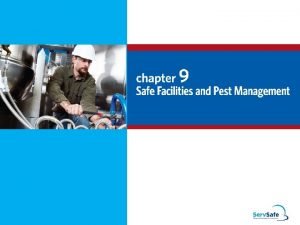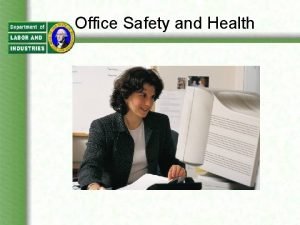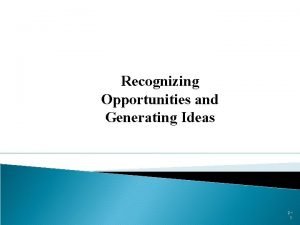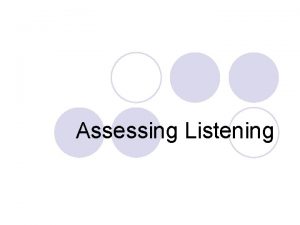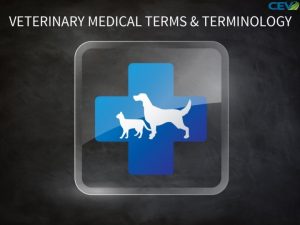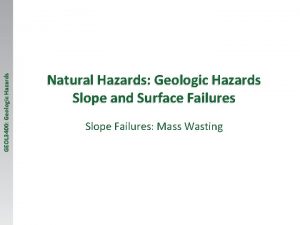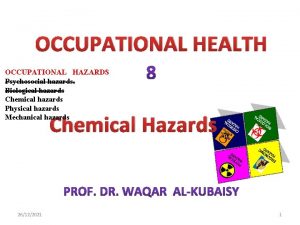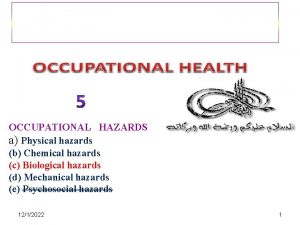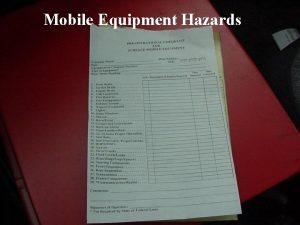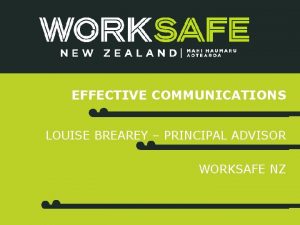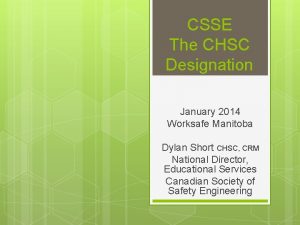WORKSAFE RECOGNIZING HAZARDS AND EQUIPMENT MOST COMMON WAYS










- Slides: 10

WORKSAFE – RECOGNIZING HAZARDS AND EQUIPMENT

MOST COMMON WAYS OF GETTING HURT • Lifting objects when working as retail clerks and shipper-receivers • Falling from ladders, scaffolding, or other raised platforms • Using knives in food service or retail • Working with hot substances or equipment in restaurants • Driving or riding in vehicles, and working near mobile equipment • Using food slicers in restaurants or supermarkets • Working near any equipment or machinery when it’s in operation

HAZARDS PART ONE Physical hazards • Sources: falling, slipping/tripping, being struck, being caught in machinery, being cut, or being burned. • Injuries bruising, broken bones, cuts and gashes, and burns. Chemical hazards • Sources: exposure to unsafe chemicals. • Injuries: burns, asphyxiation, rashes, or illness. Ergonomic hazards • Sources: improper lifting, repetitive motions, or overextending. • Injuries: sprains and strains of any joint or muscle, as well as repetitive strain injuries such as carpal tunnel syndrome.

HAZARDS PART TWO Biological hazards • Sources: exposure to bacteria, viruses, parasites, molds, and other hazardous life forms. • Injuries: diseases and poisoning. Natural environment hazards • Sources: exposure to cold, heat, sun, or water. • Injuries: heat stress, hypothermia, frostbite, sunburn, and drowning. Psychosocial hazards • Sources: stress, workplace violence, bullying, shiftwork, distractions. • Injuries: Any of these situations can lead to an accident and cause injuries and/or mental health issues.

OTHER RISK FACTORS…. • Working alone • Working in a confined and/or cluttered space • Worker is fatigued, distracted or impaired by drugs or alcohol

PLEASE PAUSE AND WORK THROUGH THIS WITH A PARTNER. • Server at a restaurant – click on this link by using CTRL + CLICK and see if you can spot all of the hazards in the picture.

STEPS TO ASSESS AND REDUCE RISK OF DANGEROUS SITUATIONS • What is unsafe? What are the hazards? • Why is it a hazardous situation? What could happen? What injuries could occur? • What could be done to eliminate or minimize the hazard?

WAYS TO MINIMIZE RISK • Keep workspace clear and uncluttered • Follow safe lifting procedures • Wear appropriate protective equipment • Pay attention • Follow all safety procedures • Ask questions and for help, if required

PERSONAL PROTECTIVE EQUIPMENT • Your turn to do some research! • Please follow the instructions on your worksheet.

YOUR TURN TO TRY AND IDENTIFY THE HAZARDS • You will have a chance to assess a situation in a group by using the three steps we have gone over by writing (10 minutes) • You will then have to present your findings to the class by taking turns (1 -2 minute presentations)
 What are ways to install and maintain equipment?
What are ways to install and maintain equipment? Gods ways are not our ways
Gods ways are not our ways Chair hazard
Chair hazard Useful and harmful household materials
Useful and harmful household materials Observing trends in entrepreneurship
Observing trends in entrepreneurship Recognizing opportunities and generating ideas
Recognizing opportunities and generating ideas Recognizing opportunities and generating ideas
Recognizing opportunities and generating ideas Recognizing and resolving abo discrepancies
Recognizing and resolving abo discrepancies The importance of listening in lang..
The importance of listening in lang.. Recognizing opportunities and generating ideas
Recognizing opportunities and generating ideas Tnt veterinary abbreviation
Tnt veterinary abbreviation
